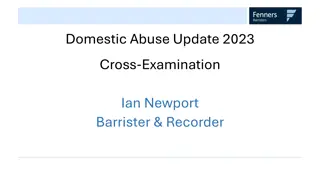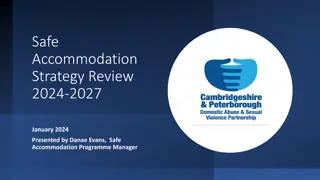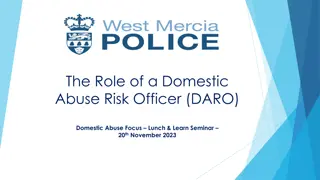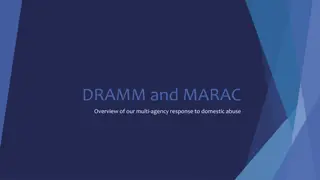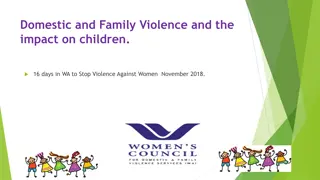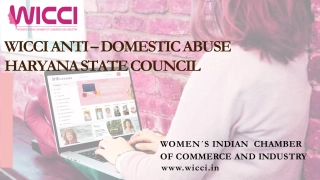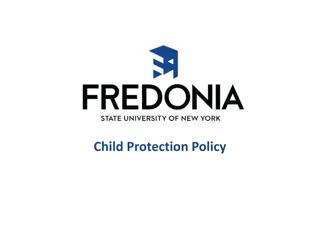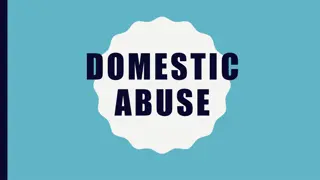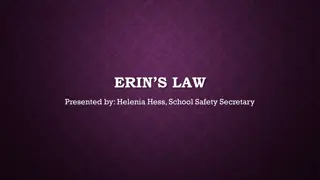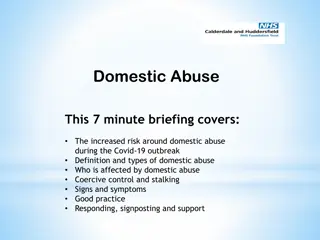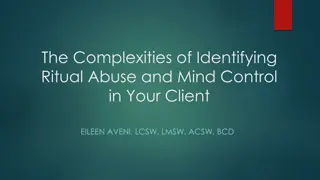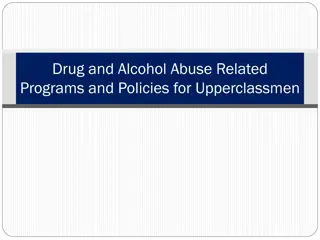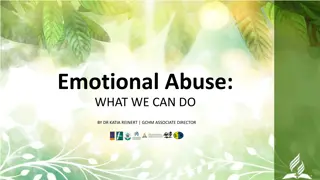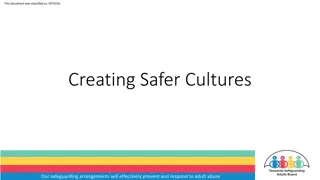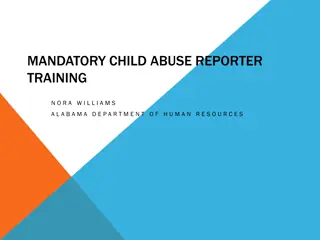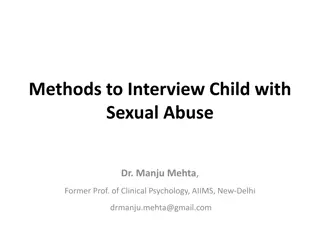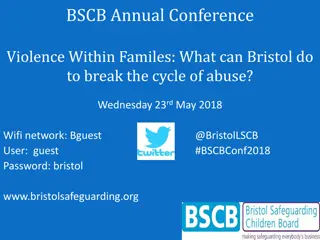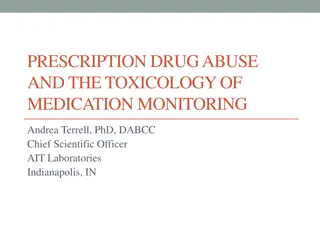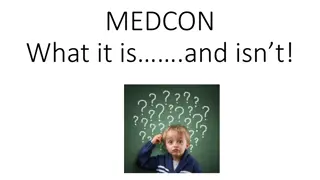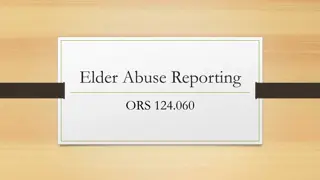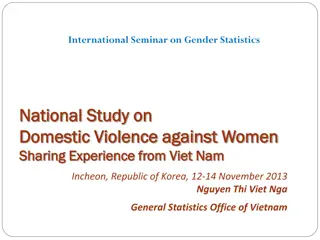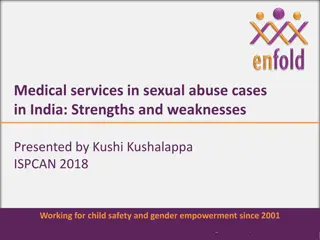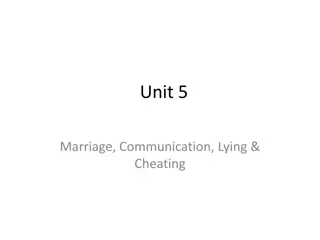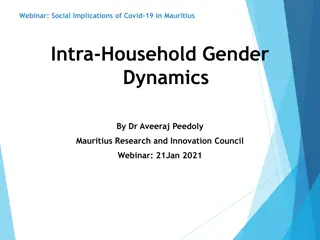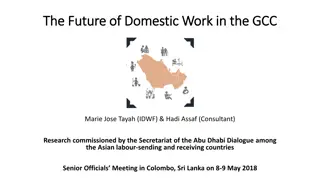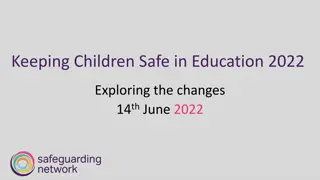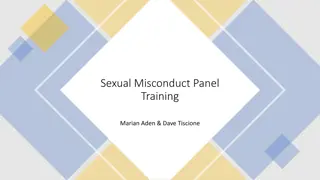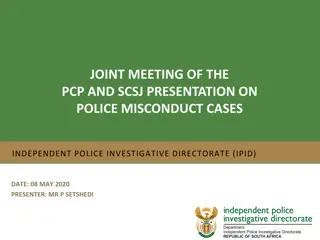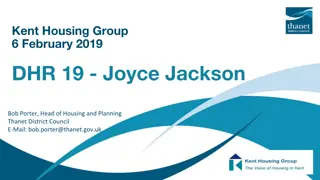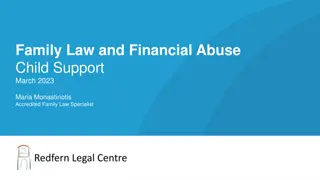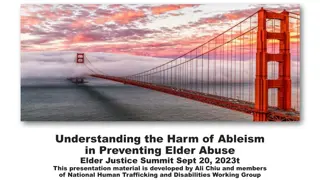Understanding the Safe and Together Model in Domestic Abuse Cases
Exploring the Safe and Together model in domestic abuse cases involving children, this content delves into perpetrator patterns, system responses, and the impact on survivors. It discusses the cardinal question of whether survivors perceive the system as supportive. The continuum of domestic violence practice, moving towards a survivor-focused and child-centered approach, and the nexus between perpetrator patterns and harm to children are also highlighted. Emphasizing the importance of recognizing patterns of coercive control and integrating responses with child and family functioning, the content underlines the need for a strong perpetrator pattern-based approach.
Download Presentation

Please find below an Image/Link to download the presentation.
The content on the website is provided AS IS for your information and personal use only. It may not be sold, licensed, or shared on other websites without obtaining consent from the author. Download presentation by click this link. If you encounter any issues during the download, it is possible that the publisher has removed the file from their server.
E N D
Presentation Transcript
the Safe and Together model: A Perpetrator Pattern-Based Approach to Domestic Abuse Cases Involving Children Motherwell, September 2015 Kyle Pinto, MSW kylepinto@endingviolence.com
The cardinal question Given the totality of the system s relationship with adult and child domestic violence survivors, is it likely that they see us as being on their side? *adapted from Hodas, 2006
Continuum of Domestic Violence Practice Domestic Violence Informed Child Welfare Systems Domestic Violence Proficiency Domestic Violence Destructive Domestic Violence Competence Domestic Violence Incapable Domestic Violence Pre- Competence Domestic Violence Blindness (C) 2014 David Mandel & Associates LLC www.endingviolence.com
Moving Systems to Become More Domestic Violence-Informed Perpetrator pattern Survivor strength- based Child centered (c) 2013 David Mandel Associates LLC Do not reproduce or distribute without permission
Strong Nexus Between Perpetrator Pattern & Harm to Children High Standards for Fathers Foundation for perpetrator pattern-based approach to intersection of domestic violence and child maltreatment (C) 2014 David Mandel & Associates LLC Do not reproduce or distribute without permission
Domestic Violence Destructiv e Domestic Violence Incapable Domestic Violence Blindness Domestic Violence Pre- Competence Domestic Violence Competence Domestic Violence Proficiency Policy & Practice Training & Supervision Integration & Institutionalization Legal Services Coordination & Collaboration Weak Nexus of Perpetrator Pattern & Harm to ChildrenStrong Incidents of violence Pattern of coercive control Only about the adult s Integrated with child/family functioning No/low expectations of fathers High standards for fathers Survivor strength approach Failure to Protect (c) 2014 David Mandel Associates LLC Do not reproduce or distribute without permission
When Domestic Violence is the Concern The domestic violence perpetrator and his behavior* are the foundational source of the risk and safety concerns for children. * not the adult survivor or her behavior (c) 2013 David Mandel Associates LLC Do not reproduce or distribute without permission
Multiple pathways to harm Perpetrator s Pattern Children s Trauma Coercive control toward adult survivor Actions taken to harm children Victim of physical abuse Seeing, hearing or learning about the violence Effects on family ecology Loss of income Housing instability Loss of contact with extended family Educational and social disruptions Effect on partner s parenting Depression/PTSD/anxiety/substance abuse Loss of authority Energy goes to addressing perpetrator instead of children Interference with day to day routine and basic care Harm to child Behavioral, Emotional, Social, Educational Developmental Physical Injury (C) 2014 David Mandel & Associates LLC Do not reproduce or distribute without permission
Intersectionality of DV perpetrator behavior and other issues Interfere Cause Exacerbate (c) 2014 David Mandel Associates LLC Do not reproduce or distribute without permission
Perpetrator Pattern-Based Approach to Domestic Violence and Children Looks at the perpetrator s behavior, not the relationship or the survivor s behavior, as the source of the domestic violence child risk and safety concerns Beyond current relationship: 360 degrees assessment of perpetrator pattern Strong nexus between domestic violence perpetrator s behaviors child safety and well being Highlights the choice(s) to be violent, abusive and controlling as parenting choices (c) 2013 David Mandel Associates LLC Do not reproduce or distribute without permission
Safe and Together model: Better Outcomes for Families and Systems Domestic Violence-Informed Child Welfare System Improved Competencies Improved Cross System Collaboration Better Outcomes for Families: Safety, Well-being & Permanency Better Assessment Better Partnerships Better Case Plans Interventions Organizational Assessment Training & Certification Practice Tools Advocacy Institute Foundation Perpetrator Pattern-Based Approach Model Characteristics Principles Critical Components (c) 2015 David Mandel Associates LLC Do not reproduce or distribute without permission
Child centered approach to domestic violence Removal is an option of last resort approach Fact based Model Characteristics Beyond Services Gender responsive Integrative Strengths based & Inter- disciplinary (c) 2013 David Mandel Associates LLC Do not reproduce or distribute without permission
Safe and Together Principles Keeping child Safe and Together with non-offending parent Safety Healing from trauma Stability and nurturance 1 2 Partnering with non-offending parent as default position Efficient Effective Child-centered Intervening with perpetrator to reduce risk and harm to child Engagement Accountability Courts 3 (c) 2013 David Mandel Associates LLC Do not reproduce or distribute without permission
Safe and Together Critical Components Perpetrator s pattern of coercive control Role of substance abuse, mental health, culture and other socio- economic factors Actions taken by the perpetrator to harm the child Full spectrum of the non-offending parent s efforts to promote the safety and well being of the child Adverse impact of the perpetrator s behavior on the child (c) 2013 David Mandel Associates LLC Do not reproduce or distribute without permission
Major Projects/Clients Highlights Statewide certified trainers (Ohio & Michigan) Training and integration with Safety Methodology (Florida) Advocacy Institutes (National, Florida, New York) Domestic Violence Consultant Network (CT) Case Consultation (Florida & Queensland Australia) 300 minutes of video modeling (Florida) Organizational Assessment (District of Columbia) Core Safe and Together Certification (District of Columbia) Safe and Together Integration with Differential Response and Structured Decision-Making (Nationally) Other states: Oregon, New Jersey, Iowa, Vermont, Nebraska International work: Australia, Canada, Scotland, Ireland, Singapore (c) 2014 David Mandel Associates LLC Do not reproduce or distribute without permission
Safe and Together Ohio Data Ohio 3rd Party Evaluation: Study coordinated by Ohio IPV Collaboration with support from o HealthPath Foundation o NCALP o ODJFS Data collected from 12 of the counties trained during 2013, as well as 12 Ohio counties that had participated in Safe and Together training during previous years, and 7 local CPS from AR counties that had not yet participated in the training. 5 data collection activities: o an online pre/posttest survey of 837 CPS caseworkers and supervisors o semi-structured interviews with 16 supervisors; o semi-structured interviews with 8 community stakeholders; o desk reviews of 191 CPS case files; and o review of written policies from 15 counties that had completed Safe and Together training. Exhaustive descriptions of each of these methods are appended to this report. (c) 2013 David Mandel Associates LLC Do not reproduce or distribute without permission
Strong evidence that: Mixed Evidence: CPS staff assign less blame to victims for staying in a violent relationship; CPS staff increase their concern about, and documentation of the effects of children witnessing domestic violence. CPS staff increase their understanding of coercive control; CPS staff enhance safety planning for victims and children; CPS staff increase perpetrators accountability. Little evidence that: CPS agencies change written policies; and Community stakeholders become more receptive to Safe and Together policies and principles. (c) 2014 David Mandel Associates LLC Do not reproduce or distribute without permission
Safe and Together Florida Data Work with both child welfare and domestic violence advocates o Multi-site work with DCF in Florida since 2008 o Relationship with Florida Coalition since 2006 o Different projects Subject Matter Experts Co-located Advocates Children s Legal Services Cultural & Linguistically specific work Panhandle o Training and technical assistance for both child welfare and co-located domestic violence advocates (c) 2013 David Mandel Associates LLC Do not reproduce or distribute without permission
(c) 2013 David Mandel Associates LLC Do not reproduce or distribute without permission
(c) 2013 David Mandel Associates LLC Do not reproduce or distribute without permission
Correlation between model implementation and keeping children in homes In Jacksonville Florida, the child welfare department was able to track the number of filings and removals for cases where domestic violence was identified. The data indicated a significant drop in neglect petitions (approximately 70% decrease) and removals during a period (approximately 50% decrease) correlated with significant Safe and Together model training. 14 12 10 Judicial action 8 Out of home placement 6 4 Linear (Judicial action) 2 Linear (Out of home placement) 0 (c) 2013 David Mandel Associates LLC Do not reproduce or distribute without permission
Safe and Together Model Resources & Educational Events Open Events o 3rd National Safe and Together Children and Domestic Violence Symposium Orlando, Florida October 14-16, 2015 o Thursday Webinar Series Resources o Website: www.endingviolence.com o YouTube: SafeandTogetherModel o Blog: www.endingviolence.com/blog/ o Facebook: DavidMandelAndAssociates o Twitter: SafeandTogether


